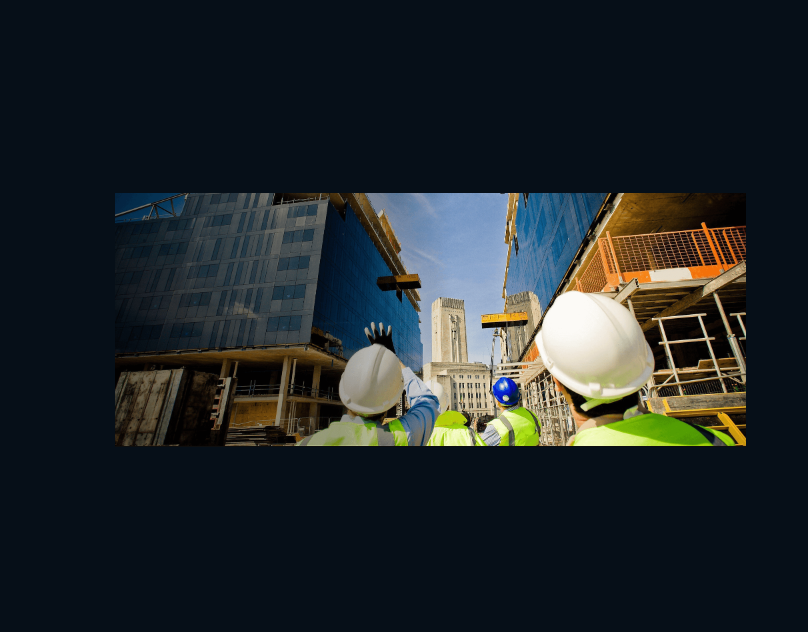In the dynamic world of construction, challenges such as delays, budget overruns, and safety concerns often loom large. However, with the rise of technology in construction, there’s potential for significant improvement. Technologies like sensors, drones, and data analytics offer solutions to address these challenges by providing rea

l-time insights and improving project management. One such innovation is construction monitoring, which harnesses these technologies to revolutionize the industry. By continuously monitoring progress, safety, and efficiency, Smart Construction Monitoring promises to transform how construction projects are executed, ensuring smoother operations and better outcomes.
What is Smart Construction Monitoring?
Smart Construction Monitoring (SCM) is a cutting-edge approach that employs sensors, data analytics, and the Internet of Things (IoT) to oversee different facets of a building project. At its core, SCM comprises three key components: sensors, a communication network, and a data visualization platform. Sensors are strategically deployed throughout the construction site to capture real-time data on factors like temperature, humidity, structural integrity, and equipment usage. This data is transmitted through a communication network, often leveraging wireless technology, to a centralized platform. Here, a data visualization platform interprets and displays the information in user-friendly formats, allowing stakeholders to monitor progress, identify potential issues, and make informed decisions to optimize construction processes and ensure project success.
Benefits of Smart Construction Monitoring
Here are the benefits of smart construction monitoring –
- Enhanced Project Efficiency
Real-time data enables smarter decisions by tracking progress, spotting bottlenecks, and optimizing resources. Better labor and material management is achieved through monitoring equipment usage and refining material delivery schedules. Additionally, proactive issue identification reduces rework and waste, ensuring higher quality control throughout the project. These advancements streamline construction processes, leading to more efficient and cost-effective outcomes.
- Increased Safety and Risk Management
Real-time monitoring of environmental conditions in construction sites helps detect risks such as gas leaks, structural stress, and potential fall risks, ensuring worker safety. Wearable sensors track worker location and fatigue levels, preventing accidents and improving overall safety. Early warning systems provide alerts for potential dangers like structural instability and adverse weather events, further enhancing safety measures. ViAct integrates these features, offering a comprehensive solution for proactive danger detection and worker protection during construction projects.
Key Technologies in Smart Construction Monitoring
Mentioned below are the key technologies in smart construction monitoring –
- Sensor Networks
Sensor networks in construction utilize various sensor types, including structural integrity sensors, environmental sensors, and wearable worker trackers. These sensors collect data on factors like building stability, environmental conditions, and worker safety. For real-time data exchange, wireless communication protocols such as Wi-Fi, Bluetooth, and Zigbee are commonly used. These protocols enable seamless transmission of data from sensors to centralized monitoring systems, facilitating quick decision-making and enhanced safety measures on construction sites.
- Data Analytics and Visualization Platforms
Data analytics and visualization platforms in construction enable actionable insights by analyzing data to identify trends and predict potential problems. These platforms provide user-friendly dashboards for project managers to monitor progress and visualize data effectively. By presenting information in an accessible format, project managers can make informed decisions, allocate resources efficiently, and address issues promptly, ultimately ensuring smoother operations and successful project outcomes.
- Integration with Building Information Modeling (BIM)
Integrating construction data with Building Information Modeling (BIM) models upgrades planning, coordination, and clash detection. By collaborating real-time construction data with BIM models, project teams can better visualize and manage project details, ensuring smoother workflows and minimizing conflicts. This integration streamlines communication, improves accuracy, and enhances collaboration among stakeholders, ultimately leading to more efficient construction processes and higher-quality project outcomes.
Implementing Smart Construction Monitoring
Here are the considerations for successful implementation –
- Project type and complexity: Before implementing smart construction monitoring, it is important to evaluate the project’s size and requirements to ensure the system meets specific needs effectively.
- Cost-benefit analysis: Performing a cost-benefit analysis is crucial when implementing smart construction monitoring to evaluate whether the potential benefits outweigh the associated costs of implementing the system.
- Going with the right technology partners: Selecting the appropriate technology partners is essential for implementing smart construction monitoring and ensuring compatibility, expertise, and support to maximize the system’s effectiveness and success in construction projects.
The Future of Smart Construction Monitoring
Emerging trends in Smart Construction Monitoring (SCM) include AI-powered predictive analytics, which forecast potential issues and optimize project management. Advanced robotics are utilized for efficient data collection, enhancing accuracy and speed. Additionally, SCM is integrating with Virtual Reality (VR) and Augmented Reality (AR) for remote monitoring and training purposes. These advancements change construction processes by improving efficiency, safety, and decision-making, ultimately leading to more successful and streamlined project outcomes.
Conclusion
Smart Construction Monitoring (SCM) transforms construction by harnessing AI, robotics, and VR/AR for enhanced efficiency and safety. With viAct leading the charge, SCM ensures seamless workflows and improved project outcomes, making construction projects more successful and sustainable.
Visit Our Social Media links :-
Source:-
Leave a comment